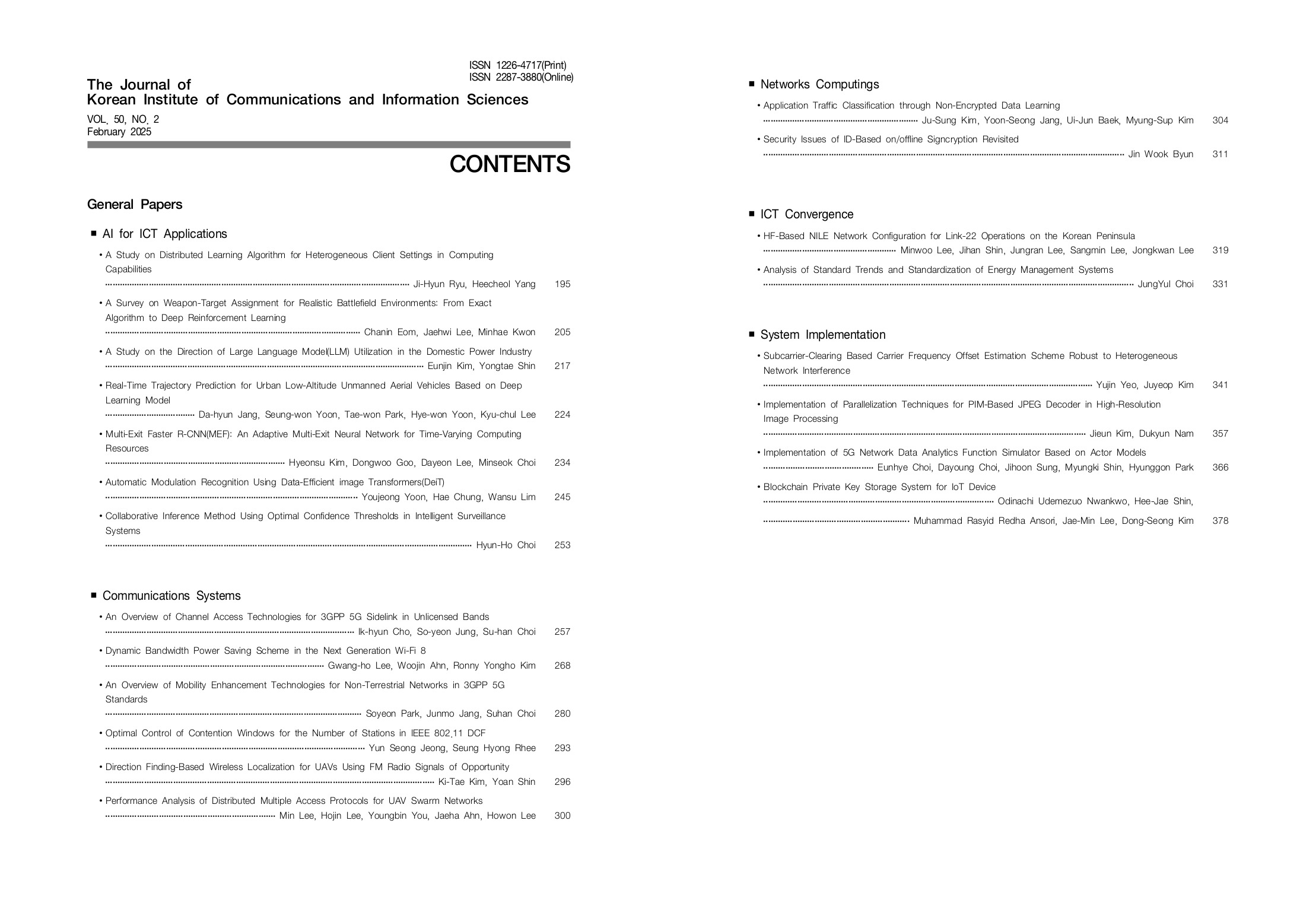Collaborative Inference Method Using Optimal Confidence Thresholds in Intelligent Surveillance Systems
Vol. 50, No. 2, pp. 253-256, Feb. 2025
 10.7840/kics.2025.50.2.253
10.7840/kics.2025.50.2.253
PDF Full-Text
Abstract
Statistics
Cumulative Counts from November, 2022
Multiple requests among the same browser session are counted as one view. If you mouse over a chart, the values of data points will be shown.
Multiple requests among the same browser session are counted as one view. If you mouse over a chart, the values of data points will be shown.
|
|
Cite this article
[IEEE Style]
H. Choi, "Collaborative Inference Method Using Optimal Confidence Thresholds in Intelligent Surveillance Systems," The Journal of Korean Institute of Communications and Information Sciences, vol. 50, no. 2, pp. 253-256, 2025. DOI: 10.7840/kics.2025.50.2.253.
[ACM Style]
Hyun-Ho Choi. 2025. Collaborative Inference Method Using Optimal Confidence Thresholds in Intelligent Surveillance Systems. The Journal of Korean Institute of Communications and Information Sciences, 50, 2, (2025), 253-256. DOI: 10.7840/kics.2025.50.2.253.
[KICS Style]
Hyun-Ho Choi, "Collaborative Inference Method Using Optimal Confidence Thresholds in Intelligent Surveillance Systems," The Journal of Korean Institute of Communications and Information Sciences, vol. 50, no. 2, pp. 253-256, 2. 2025. (https://doi.org/10.7840/kics.2025.50.2.253)
Vol. 50, No. 2 Index



